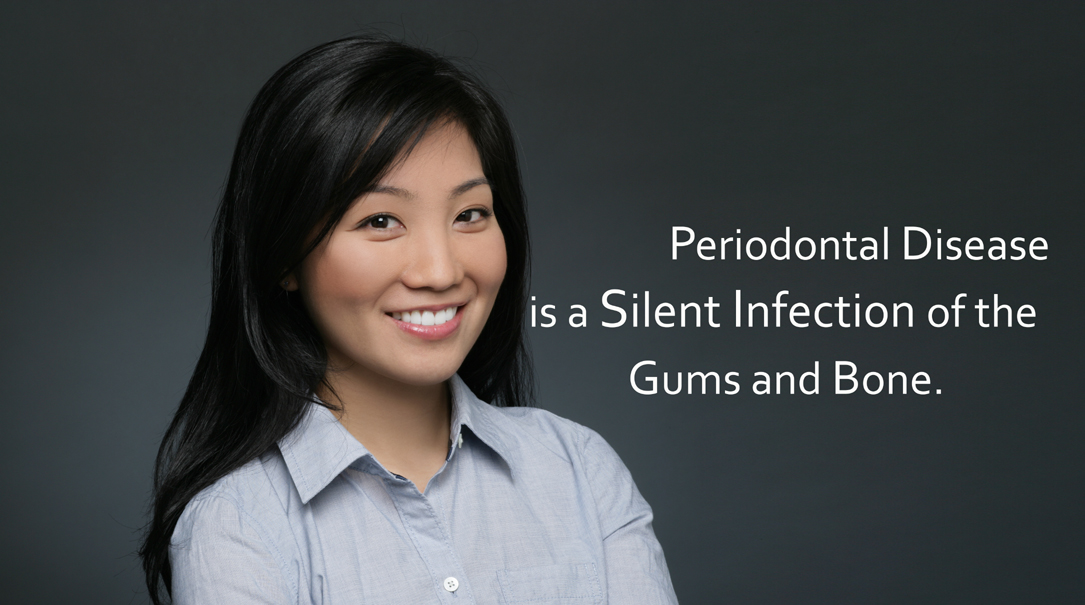Periodontal disease has reached levels of epidemic proportions, with gingivitis and periodontitis estimated to affect as many as 75% of the adult population in their lifetime.
Patients are becoming increasingly more aware that there is a body attached to their mouth! Research has proven that what is going on in a patient’s mouth can and is affecting their overall health. Studies have also shown that medical conditions and medications directly affect a patient’s oral health.
Current research and the latest understanding of periodontal disease now makes it possible for a knowledgeable dentist to provide successful dental care to reduce the risk of oral and physical disease with a course of conservative periodontal treatment.
At Westmount Dental, we stress that your periodontal health should be achieved in the least invasive manner as possible. This is often accomplished through non-surgical periodontal treatment, including scaling and root planing (a meticulous cleaning and careful smoothing of the tooth surfaces to remove bacteria), followed by adjunctive therapy such as oral hygiene instruction and antibiotics.
After scaling and root planing is performed many patients do not require any further active treatment. However, the majority of patients will require ongoing maintenance therapy to sustain health. Non-surgical therapy does have its limitations however, and when health is not achieved surgery may be indicated to restore periodontal anatomy damaged by this disease.
Periodontal disease affects the gums, ligaments and bone that support your teeth. The earliest warning sign is when the gums become red, swollen, and bleed easily when touched. Most often there is no discomfort at this stage, yet the disease has gained a foothold and is now known as “gingivitis.” Gingivitis is reversible with improved oral hygiene techniques and a professional cleaning, what we call Active Periodontal Treatment. Left untreated, however, the danger exists that it will progress into an irreversible condition – periodontitis – that damages the bone supporting the teeth.
Periodontitis is a more advanced disease. Bone and tissues supporting the teeth are destroyed yet an individual may be unaware of the problem. When this occurs the gum attachment begins separating from the teeth creating “pockets”. These pockets harbour millions of bacteria trapped in a plaque that sticks to the teeth. Unfortunately, the mouth is a perfect incubator as it is warm, dark, and moist, with plenty of “food” for the bacteria to metabolize. The result is that the bacterial plaque thrives and matures.
Periodontal diseases, including gingivitis and periodontitis, are serious infections that, if left untreated, can lead to tooth loss. The main cause of periodontal disease is bacterial accumulation however, additional factors also affect the health of your gums including smoking, genetic predisposition, puberty, pregnancy and menopause.
Persistent swollen, red or bleeding gums, tooth sensitivity,
gum tenderness, and bad breath are among the
warning signs of periodontal (gum) disease.
Signs & Symptoms To Look Out For
Periodontal disease is often silent, meaning symptoms may not appear until an advanced stage of the disease. Similarly, high blood pressure and high cholesterol are also silent conditions, and it only hurts when you have a heart attack or stroke. Thankfully, periodontal disease has many warning signs that allow us to initiate a preventive and active treatment protocol before you experience pain and tooth loss.
The warning signs include the following:
- Red, swollen or tender gums
- Bleeding while brushing or flossing
- Receding gums
- Loose teeth
- new or larger spaces between teeth
- increasing amounts of food getting stuck between your teeth
- Pus around your teeth
- Persistent bad breath
- A change in the way your teeth fit together when you bite


